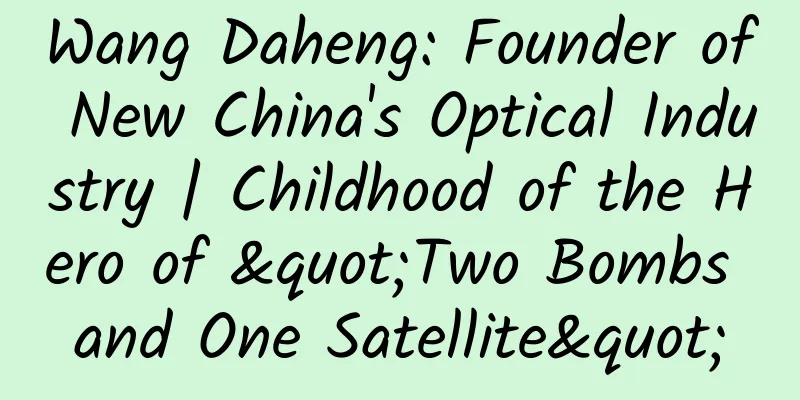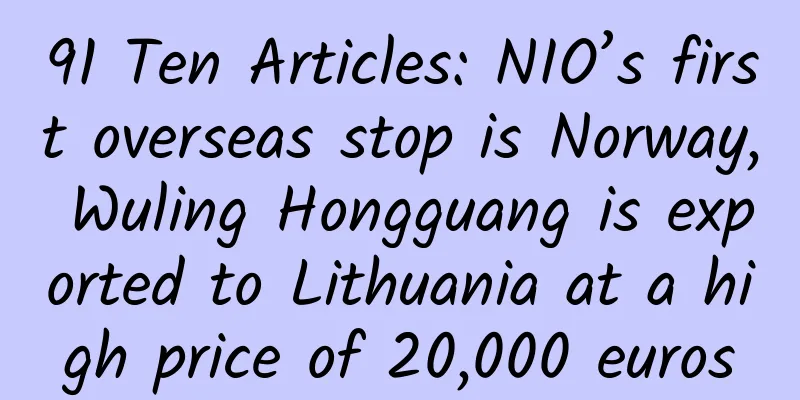Wang Daheng: Founder of New China's Optical Industry | Childhood of the Hero of "Two Bombs and One Satellite"

|
Wang Daheng, the founder of New China's optical industry, developed China's first optical glass, the first electron microscope, and the first laser. He was a major advocate of the high-tech 863 program and a recipient of the "Two Bombs and One Satellite Medal of Merit." Wang Daheng during his student years Beijing Confucius School where Wang Daheng once studied Story 1: Born in Japan, returned to China with his parents when he was six months old On February 26, 1915, a loud cry of a baby was heard in a Japanese-style house near the Tokyo National Observatory. The 38-year-old father Wang Yingwei was so excited that he kowtowed to his ancestors facing the motherland. This scholar in the late Qing Dynasty was awakened from his dream of taking the imperial examination by the Sino-Japanese War of 1894-1895. He came to Japan to study in order to learn from the barbarians and serve the country with his scientific knowledge. When the news of the victory of the Revolution of 1911 came, the father could not wait to return to China with his wife and Wang Daheng, who was just half a year old. Daheng's parents were typical strict fathers and kind mothers. However, Daheng felt that his father was too strict and felt very alienated from him. Every time he wrote big characters, he was particularly afraid that his father would stand behind him. If he held the brush incorrectly or wrote a character incorrectly, his father would slap him in the face, often causing the brush to fly and the ink to splatter. When his father gave instructions on homework, he would not allow him to forget anything he had explained once, and he would not allow him to not understand anything that he thought was simple. The father didn't like any of his children, but it was his mother Zhou Xiuqing who first discovered Daheng's talent. His mother graduated from Suzhou Lanling Girls' School, was well-educated and played the organ very well. In her spare time, she taught Daheng a few words, but her son remembered them all. Soon he learned thousands of Chinese characters and simple arithmetic. His father didn't believe it at first, but after testing him in person, he threw down three words: Go to school! Daheng, who just turned 5, was skinny and looked only 4 years old. But after an interview, the Beijing Kongde Primary School decided to let Daheng go straight to the second grade. Because of his short stature, Daheng had to stand on a bench every time he went to the stage to do questions on the blackboard to reach it. Story 2: Chopsticks bent from a bowl of water, a first acquaintance with "optics" Although Daheng always had a stern face and his thick glasses reflected a cold light, there were times when Daheng was willing to get close to his father, and that was when he would tell him about astronomy, geography, physics and chemistry. Once, my father asked Daheng to bring a bowl of water and a chopstick. My father put the chopstick into the water for Daheng to see, and asked if the chopstick was straight or bent. Daheng looked at it carefully and said it was bent. Then, my father took the chopstick out of the bowl of water and showed it to Daheng, asking if it was straight or bent. Daheng was so young that he was confused. Did I see it wrong? The chopstick was clearly bent just now, how come it is straight now? When Daheng was worried that his father would slap him, his father put the chopsticks into the water bowl again, and the chopsticks bent again. Daheng was completely stunned. His father told him word by word that this is called refraction, an optical phenomenon. After his father left, Daheng took the chopsticks and put them in and out of the water bowl for a long time. Straight, curved, curved, straight, this is amazing, isn't it? This is the first time that Daheng has seen an optical phenomenon in his life. This thing called refraction can actually bend chopsticks. Daheng has remembered the term "optics" since then. What is quite interesting is that Wang Daheng's life is closely connected with the cause of optics. He is known as the "Father of Chinese Optics". Story 3: There are many famous people in the famous school. It turns out that he and Qian Sanqiang were childhood friends. Wang Daheng attended famous schools for his elementary, middle and university education. He attended Beijing Comte School, which was named after the French positivist philosopher Auguste Comte. It was founded by Cai Yuanpei, Li Shizeng and Peking University professors Shen Yinmo, Ma Youyu and Ma Shuping, and focused on cultivating scientific spirit. Wang Daheng attended Beijing Huiwen Middle School, the earliest church-run middle school in China. Cai Yuanpei wrote the school motto: "Love of learning is close to wisdom, hard work is close to benevolence, and knowing shame is close to courage." When Daheng graduated from junior high school, he ranked first in the school in mathematics and science. Because his father was transferred to work at Qingdao Observatory, Wang Daheng attended Qingdao Lixian Middle School for high school. Many of the teachers were foreigners and returned overseas students. Daheng liked the Swiss physics teacher the most. He often did interesting physics experiments in class. As a result, he developed a strong interest in physics and developed the habit of doing experiments. Surprisingly, when he was 17 years old, Wang Daheng, who had just graduated from high school, was admitted to three universities at once: Nankai University, Qingdao University and Tsinghua University. He chose Tsinghua University to study physics. Many celebrities emerged from Wang Daheng's classmates. When he was in elementary school at Kongde, he sat on the same table and bench with Qigong. The most interesting thing is that in Kongde's elementary school class, there was a tall student in the back row named Qian Bingqiong, and the short student in the front row, Wang Daheng, was called "Wang Daxing" by the students who had just learned to read and write because the character "heng" was uncommon. At that time, Qian Bingqiong and "Wang Daxing" had little contact. Later, Qian Bingqiong changed his name to Qian Sanqiang to encourage himself. It was not until the third year of college at Tsinghua University that Wang Daheng and Qian Sanqiang became best classmates, and then they knew that they were childhood friends. Reading link: The founder of the "Two Bombs and One Satellite" "Two bombs and one satellite" originally referred to atomic bombs, hydrogen bombs, and artificial satellites. The atomic bomb and hydrogen bomb in the "two bombs" were later collectively called nuclear bombs, and the other bomb referred to the missiles developed in the early days. Later, "two bombs and one satellite" referred to guided missiles, nuclear bombs, and artificial satellites. On September 18, 1999, on the eve of the 50th anniversary of the founding of the People's Republic of China, the CPC Central Committee, the State Council and the Central Military Commission solemnly commended 23 scientific and technological experts who made outstanding contributions to my country's "two bombs and one satellite" cause and awarded them the "Two Bombs and One Satellite Medal of Merit". They are called the "Two Bombs and One Satellite" heroes. |
<<: What is acrophobia and why do people fear heights?
>>: Driving on Mars is not easy: the wheels are very different from those on Earth
Recommend
As 5G mobile phones become more popular, sales are declining. What’s the problem?
As 5G mobile phones become more popular, sales ar...
Tesla, Toyota and more than 100 other car manufacturers' secrets leaked, with 157 GB of core secrets leaked
According to the New York Times, security researc...
[2017 latest edition] A complete list of professional terms in the mobile Internet industry!
Based on the feedback from previous students on Q...
They plan to kill 450,000 owls just to save another species
Fifteen years ago, Jack Dumbacher played a clip o...
Ma Ruifang's interesting stories about "Jin Ping Mei"
A brief introduction to the content of Ma Ruifang&...
If smart drugs really exist, would you dare to take them?
Every exam season, rumors about "smart drugs...
How much does it cost to customize a catering WeChat mini program?
Q: How much does it cost to customize a catering ...
APP promotion scenario: let users actively download your product!
"Scenario-based" is a prerequisite that...
Best Practices for Agile Data Operations in Internet Finance—Wang Tong
Wang Tong , Vice President of Sales at Beijing Yo...
Lanzhou WeChat Mini Program Mall Ranking, What are the factors that affect the ranking of mini programs?
Open the APP on your phone, no matter which e-com...
Futures War Theory Zhou Dao Price-abandoning Trend Trading System
Futures War Theory Zhou Dao Price-abandoning Tren...
Plug-in hybrid or extended range? Stop arguing! Volkswagen CEO has given the answer: plug-in hybrid models will be launched
Li Xiang, founder of Ideal Auto, recently pointed...
How to implement fan-adding promotion in the tourism industry? Here are 8 suggestions for you
There are many industries in the market that are ...
Information flow, fan channel, creativity, account structure...you must have encountered these problems!
Question 1: How do you evaluate the effectiveness...
13 lessons to cultivate a beautiful back and swan neck, easily appear 5 cm taller, and shape a perfect body curve
13 lessons to cultivate a beautiful back and swan...









